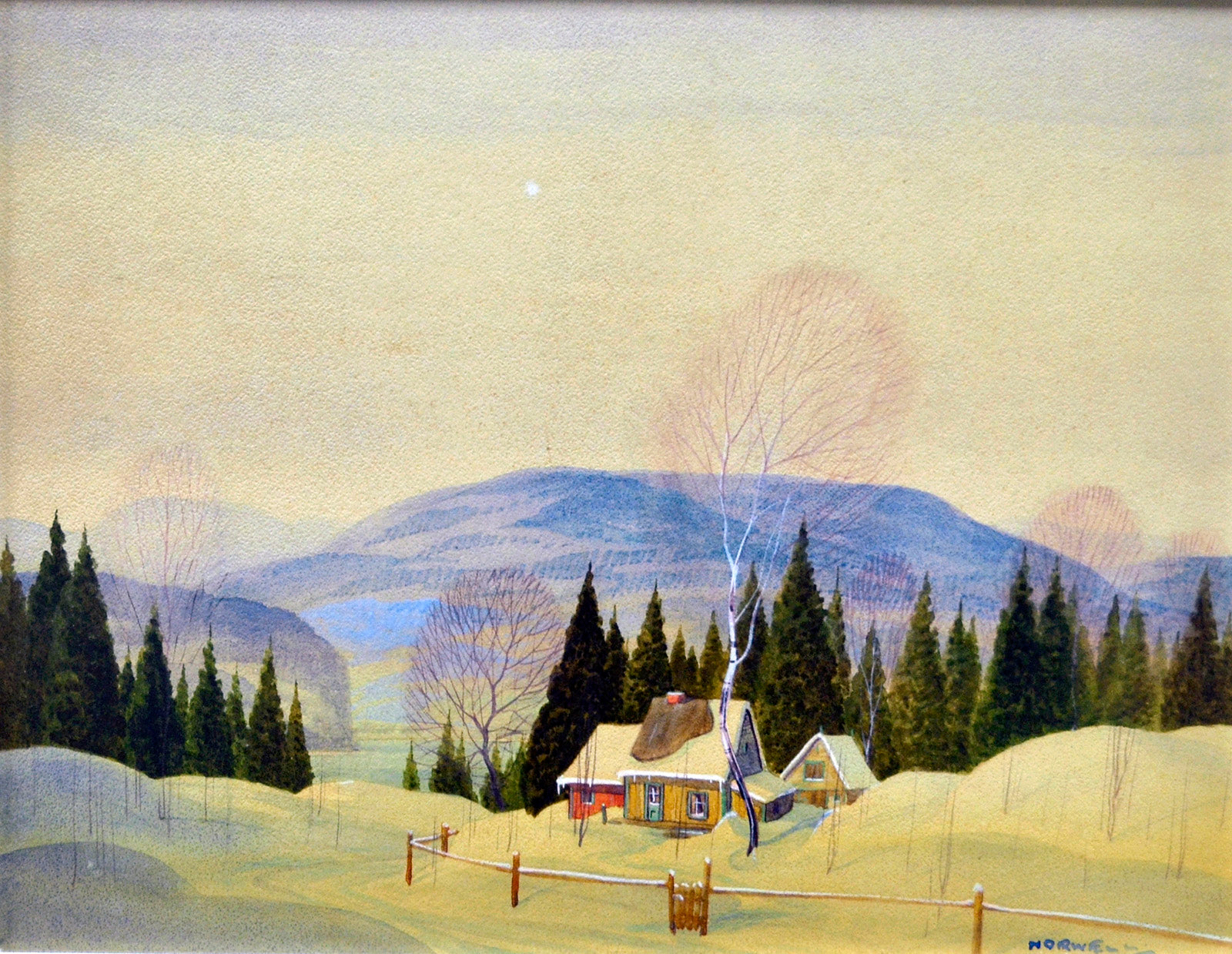Graham Norwell
Graham Noble Norwell (1901–1967, Edinburgh, Scotland) emigrated to Canada in 1914 and studied at the Ontario College of Art under Arthur Lismer, George Reid, J.W. Beatty, and Robert Holmes. Further training in London and Paris, including study with Augustus John, deepened his approach to colour and atmosphere. Working in oil and watercolour, Norwell became known for Laurentian landscapes, particularly winter scenes, rendered with simplified forms and luminous tonal contrasts.Graham Noble Norwell (1901–1967, Edinburgh, Scotland) emigrated to Canada with his family in 1914, settling in Kingston, Ontario. In 1920 he entered the Ontario College of Art, studying under Arthur Lismer, George Reid, J.W. Beatty, and Robert Holmes before continuing his training in London and Paris, where he studied with Augustus John. Returning to Canada, he became known for his landscapes of Quebec, particularly the Laurentians, where he lived for many years.
Working in both oil and watercolour, Norwell simplified form in order to focus on atmosphere, light, and tonal harmony, producing luminous winter scenes of rural villages and countryside. He exhibited regularly with the Royal Canadian Academy of Arts (1921–1943) and the Art Association of Montreal (1922–1943), and travelled widely in Europe. His work is represented in major collections including the National Gallery of Canada and the Art Gallery of Ontario. Norwell’s ability to distill the Canadian landscape into mood and colour secured his place within 20th-century Canadian art.


